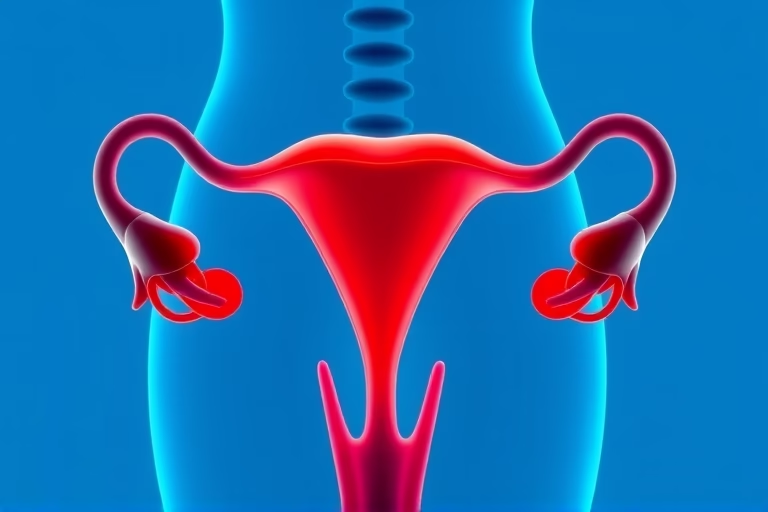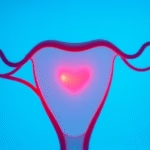Understanding Fibroids and Heavy Implantation Bleeding
In this article, we will be discussing the relationship between fibroids and heavy implantation bleeding. Fibroids, also known as uterine leiomyomas, are non-cancerous tumors that develop in the muscular wall of the uterus. These growths can vary in size and number, and while many women with fibroids experience no symptoms, some may face complications, including heavy menstrual bleeding.
Implantation bleeding typically occurs when a fertilized egg attaches itself to the lining of the uterus. This can result in light spotting or bleeding, usually around the time a woman would expect her period. The question arises: can fibroids cause excessive bleeding during implantation? While fibroids are not directly linked to implantation bleeding, they can contribute to overall uterine abnormalities, which may lead to heavier than normal bleeding during a menstrual cycle. Understanding both conditions is crucial for managing symptoms and seeking appropriate medical advice.
What Are Uterine Fibroids?
Uterine fibroids are benign tumors that grow within the muscle tissue of the uterus. They are quite common among women of reproductive age, particularly those between 30 and 40. Fibroids can vary significantly in size, and they can be classified into four categories: intramural (inside the wall), submucosal (beneath the lining), subserosal (on the outer wall), and pedunculated (attached to the uterus by a stem).
While the exact cause of fibroids remains unclear, several factors can influence their formation, including:
- Hormonal changes, particularly estrogen and progesterone levels
- Genetic factors or family history of fibroids
- Environmental influences and lifestyle factors, such as obesity and dietary habits
Women with fibroids may experience various symptoms, including heavy menstrual bleeding, pelvic pain, and pressure symptoms. However, many women may remain asymptomatic. This variance highlights the importance of individual assessment and medical guidance.
What Is Implantation Bleeding?
Implantation bleeding occurs when a fertilized egg attaches itself to the uterine lining, which usually happens around six to twelve days after ovulation. It is often lighter in color and flow than a regular menstrual period and may last from a few hours to a couple of days. Characteristics of implantation bleeding include:
- Timing: Occurs shortly before or around the expected date of the menstrual period
- Color: Typically light pink or brown, rather than the bright red of menstrual blood
- Flow: Usually light spotting and not heavy like menstrual flow
Understanding these characteristics helps women differentiate between regular periods and possible signs of early pregnancy.
Connecting Uterine Fibroids and Implantation Bleeding
The primary question regarding uterine fibroids is whether they cause heavy implantation bleeding. While fibroids can disrupt normal uterine function and may lead to heavier menstrual bleeding, their effect on implantation bleeding is less clear.
Fibroids may cause changes in the uterine environment, potentially affecting blood flow and the uterine lining’s ability to support a fertilized egg. This disruption may lead to a higher likelihood of abnormal bleeding. However, there is limited research establishing a direct causal relationship between fibroids and heavy implantation bleeding.
For women with diagnosed fibroids, it is essential to monitor any changes in bleeding patterns and discuss these with a healthcare provider. Proper evaluation can help identify underlying causes and appropriate treatment options if needed.
Symptoms of Uterine Fibroids
While some women with uterine fibroids may not experience any symptoms, others may face significant issues. Common symptoms associated with fibroids include:
- Heavy menstrual bleeding and prolonged periods
- Pelvic pain or cramping
- Increased urinary frequency
- A feeling of fullness in the lower abdomen
- Complications in pregnancy and labor in severe cases
These symptoms showcase how fibroids can impact a woman’s quality of life. Regular medical evaluations can help manage these issues effectively.
Diagnosis of Uterine Fibroids
Diagnosing uterine fibroids typically involves a combination of medical history, physical examination, and imaging studies. Common methods include:
- Pelvic examination: A healthcare provider may feel for irregularities during a routine exam.
- Ultrasound: A non-invasive imaging method to visualize the uterus and identify fibroids.
- Magnetic resonance imaging (MRI): Provides detailed images of the uterus and can help determine the size and location of fibroids.
It is vital for women with symptoms consistent with fibroids to seek medical evaluation. Accurate diagnosis allows for appropriate management options, including medications or surgical interventions if necessary.
Treatment Options for Uterine Fibroids
Treatment for uterine fibroids depends on the severity of symptoms and the patient’s individual circumstances. Options may include:
- Medication: Hormonal treatments or anti-inflammatory drugs to manage symptoms
- Minimally invasive procedures: Such as uterine artery embolization or MRI-guided focused ultrasound
- Traditional surgery: In cases of severe symptoms, a myomectomy (removal of fibroids) or hysterectomy (removal of the uterus) may be considered
The choice of treatment should be guided by a healthcare provider, considering the patient’s age, health, and future reproductive plans.
Preventive Measures for Uterine Fibroids
While it is not completely clear how to prevent uterine fibroids, certain lifestyle choices may help reduce the risk or severity of symptoms. Consider the following:
- Maintaining a healthy weight through diet and exercise
- Consuming a balanced diet rich in fruits, vegetables, and whole grains
- Avoiding excessive alcohol and caffeine intake
- Managing stress through relaxation techniques like yoga or meditation
Making these lifestyle changes can contribute to overall well-being and may help minimize the impact of fibroids.
Complications Associated With Uterine Fibroids
In some cases, uterine fibroids can lead to complications, particularly if left untreated. Potential issues include:
- Anemia: Resulting from heavy menstrual bleeding
- Infertility: Some fibroids, especially submucosal types, can interfere with conception
- Pregnancy complications: Such as miscarriage or preterm birth
Understanding these potential complications underscores the importance of monitoring and discussing symptoms with a healthcare provider.
Final Thoughts
In conclusion, understanding the relationship between uterine fibroids and heavy implantation bleeding is critical for women navigating these health concerns. While fibroids may not directly cause heavy implantation bleeding, they can impact overall uterine health, prompting changes in menstrual cycles and bleeding patterns.
Women with suspected fibroids should seek proper evaluation and consider treatment options based on their symptoms. Monitoring lifestyle factors can also play a significant role in managing health outcomes. Having a supportive healthcare provider will guide individuals through symptoms, diagnosis, and treatment.
As research continues on uterine fibroids and their implications, staying informed empowers women to make better choices related to their reproductive health.
Frequently Asked Questions
1. Can I get pregnant if I have fibroids?
Yes, many women with fibroids can conceive, but depending on their location and size, fibroids may impact fertility. Consulting a healthcare provider is essential for personalized advice.
2. Is surgery the only option for fibroids?
No, various treatment options are available, including medication and minimally invasive procedures. Your healthcare provider can determine the most suitable approach based on individual circumstances.
3. How do I know if my bleeding is due to fibroids?
Women should discuss symptoms like heavy bleeding with their healthcare provider, who may recommend diagnostic tests to identify fibroids and other potential issues.
4. Are fibroids linked to cancer?
No, uterine fibroids are benign tumors and are not considered cancerous. However, any changes in bleeding patterns should be thoroughly evaluated by a healthcare professional.
5. What lifestyle changes can I make to manage fibroids?
Maintaining a healthy weight, consuming a balanced diet, avoiding excessive alcohol and caffeine, and managing stress can help manage symptoms effectively.
Further Reading
What Type of Psychotherapy Is Best for Anxiety?







